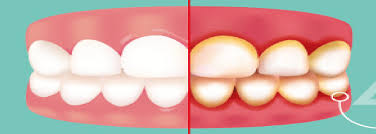Gingiva or gum is part of the tooth supporting tissue that protects the underlying tissue. This function is supported by the gingival connective tissue, which will respond if an inflammation occurs. Inflammation of the gingiva is known as gingivitis. Gingivitis is an inflammatory state that occurs as a first form of defense against bacteria and pathological changes in gingival tissue.
Based on data obtained from the National Health and Nutrition Examination Survey III (NHANES III) in America, it was found that 55% of women with gingivitis were in the 18-24 year-age group. With this data, it can be concluded that the prevalence of gingivitis in productive age is followed by fluctuations and hormonal changes in women.
Hormonal changes in women that occur in menstrual cycle are one of the systemic factors that may cause inflammation of the gingiva (gums), menstruation gingivitis. Women with gingival inflammation will experience clinical symptoms such as gingival inflammation. If the common gingival inflammation occurs due to bacteria in tartar, menstruation gingivitis may occur even without tartar.
Menstrual cycles occur in two phases: the proliferation phase (from menstruation to ovulation) and the luteal phase (from post ovulation until the beginning of menstruation). In the luteal phase, there is an increase of progesterone, which affects the state of the gingiva. Gingiva becomes more sensitive to plaque (food remains attached to the teeth) and the inflammatory process. Menstrual gingivitis may occur even though tartar is not found in the patient’s oral cavity.
Therefore, the authors would like to see the incidence of gingivitis and its correlation with oral hygiene in women who are menstruating, before having menstruation, and after the menstruation. This research was conducted with a sample of 318 respondents from dentistry students. Respondents have filled out the readiness form as research subjects before being interviewed by the research team. This research lasted for 6 months.
The results of this study showed that women who are menstruating and after menstruation have lower oral hygiene (11.3%) than women who are in the pre-menstrual phase (5.7%). However, the prevalence of gingivitis in women in the pre-menstrual phase is higher (24.5%) than women who are menstruating and after menstruation. It can be concluded that, although the state of the oral cavity is good or clean, women in the pre-menstrual phase (luteal phase) tend to experience gingivitis. It can be caused by the increasing progesterone hormone before the menstrual phase. However, the low prevalence showed from the result raises the question, are there any other factors triggering gingivitis in women besides hormonal changes?
Further research is needed to determine the factors influencing the condition of gingival inflammation in women related to menstrual conditions. The results of this study are expected to improve the knowledge of women regarding the condition and health of their oral cavity, related to hormonal changes in women as they go through the menstrual cycle.
Author: Dr. R. Darmawan Setijanto, drg., M.Kes
Details of this research available at http://www.jioh.org/temp/JIntOralHealth116388-2191303_060513.pdf
Raden Darmawan Setijanto, Maria Viany Rahayu, Taufan Bramantoro, Gilang Rasuna Sabdho Wening, Riddo Adli Rudhanton, Aulia Ramadhani. Gingival Inflammation in 2 Phases of Menstrual Cycle and its Relation to Oral Hygiene of Female Dentistry Students. J Int Oral Health 2019;11(6):388-392





